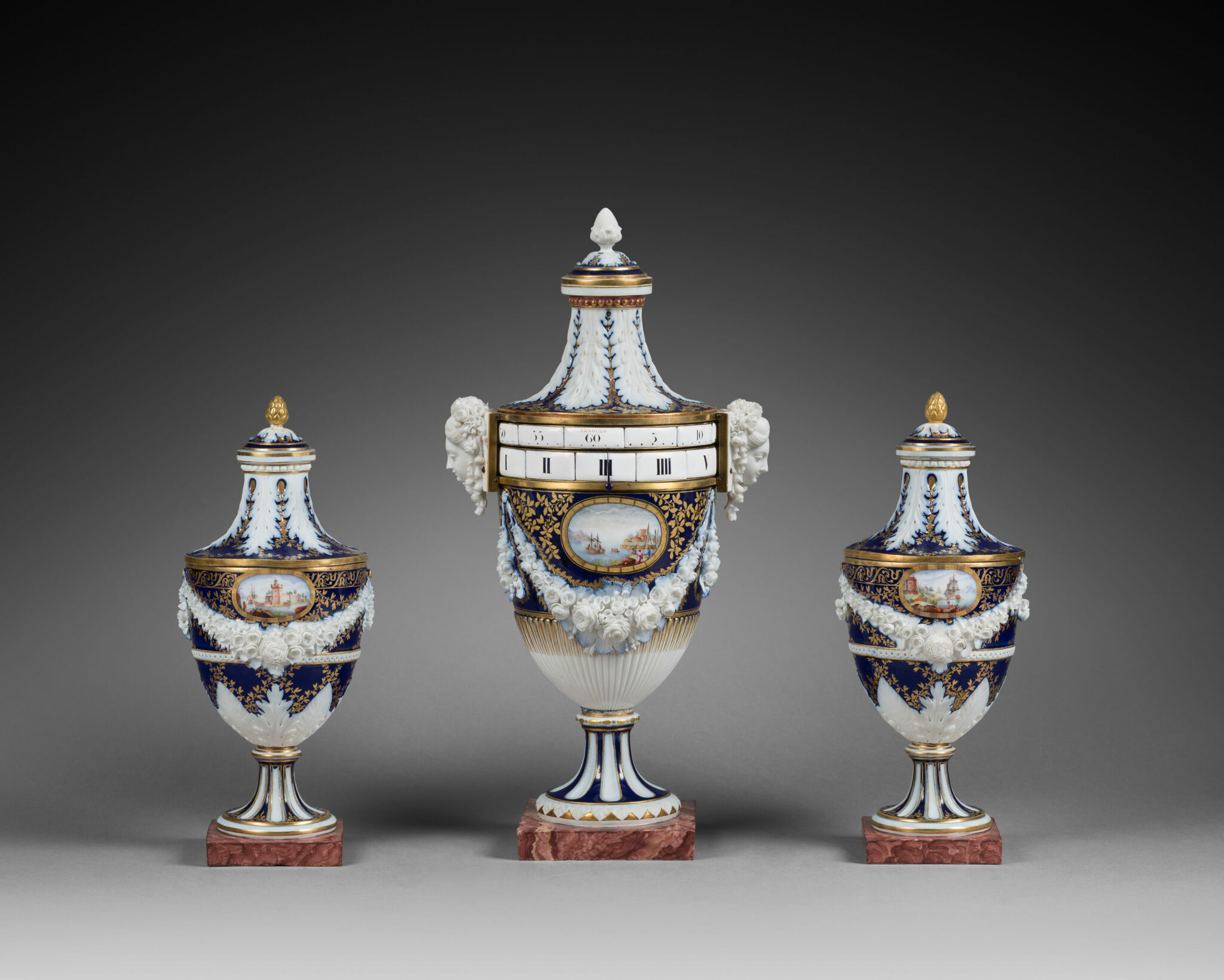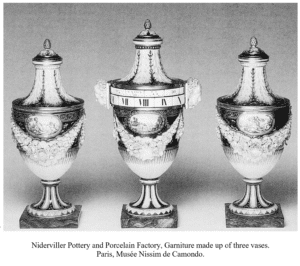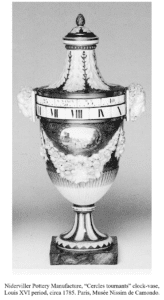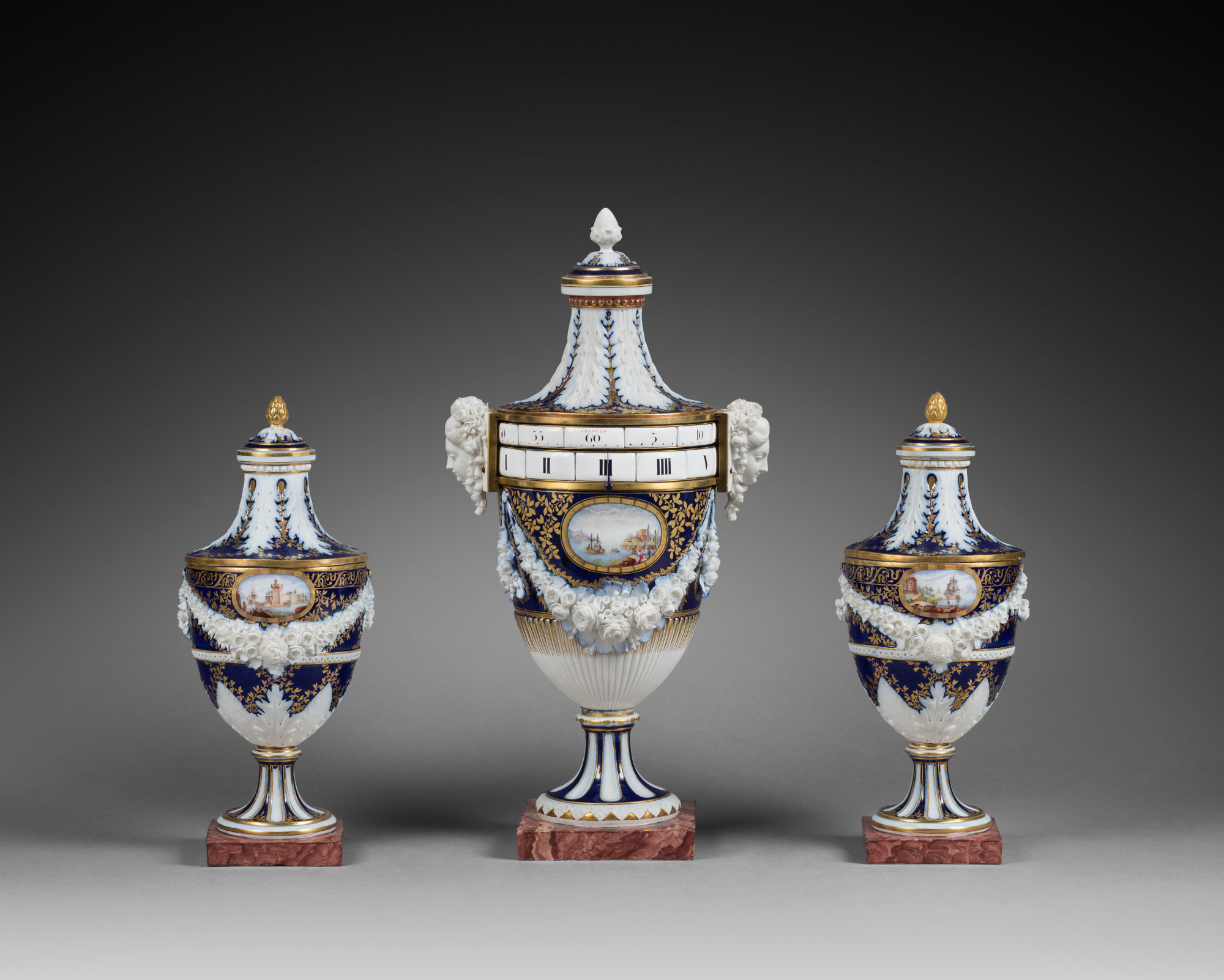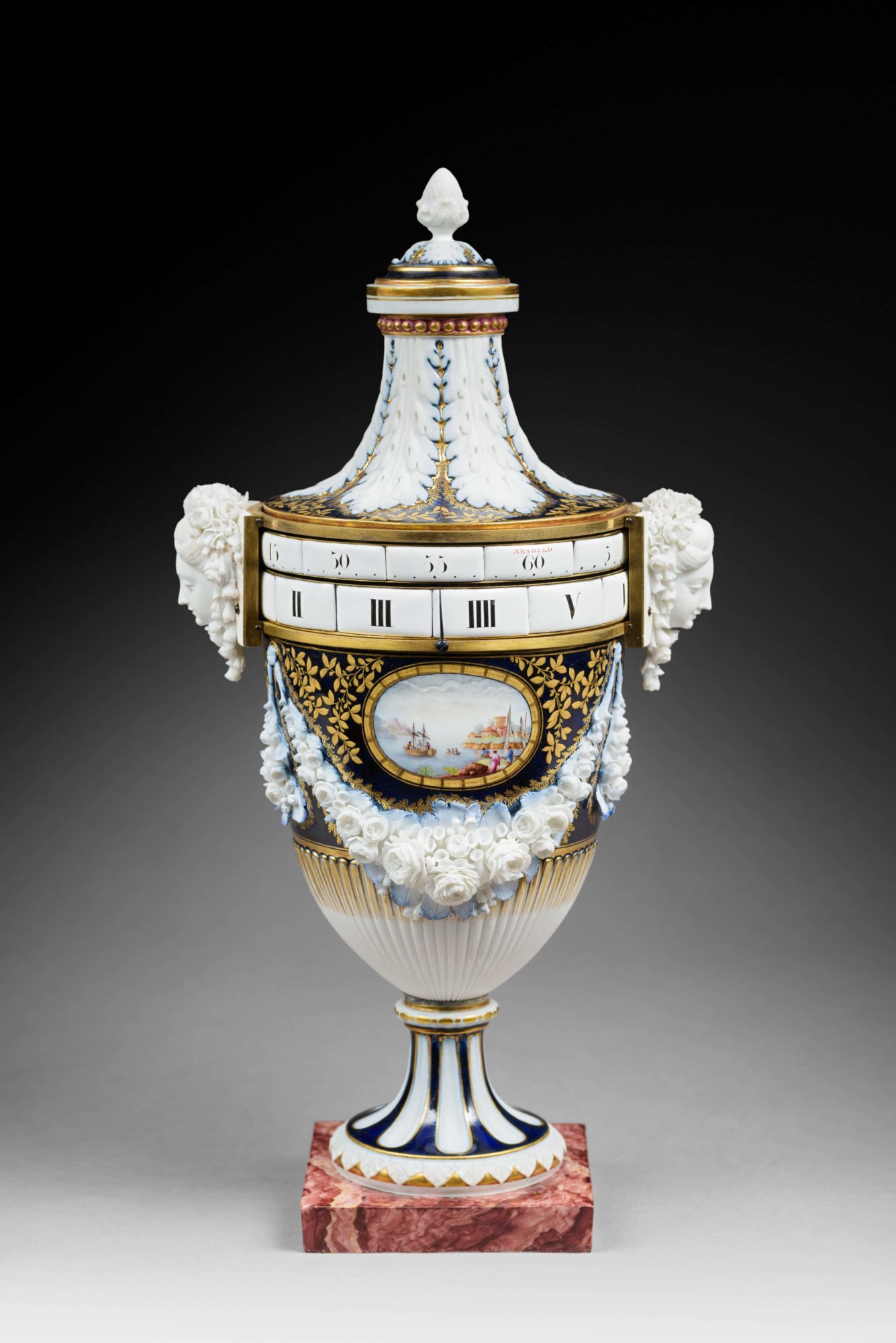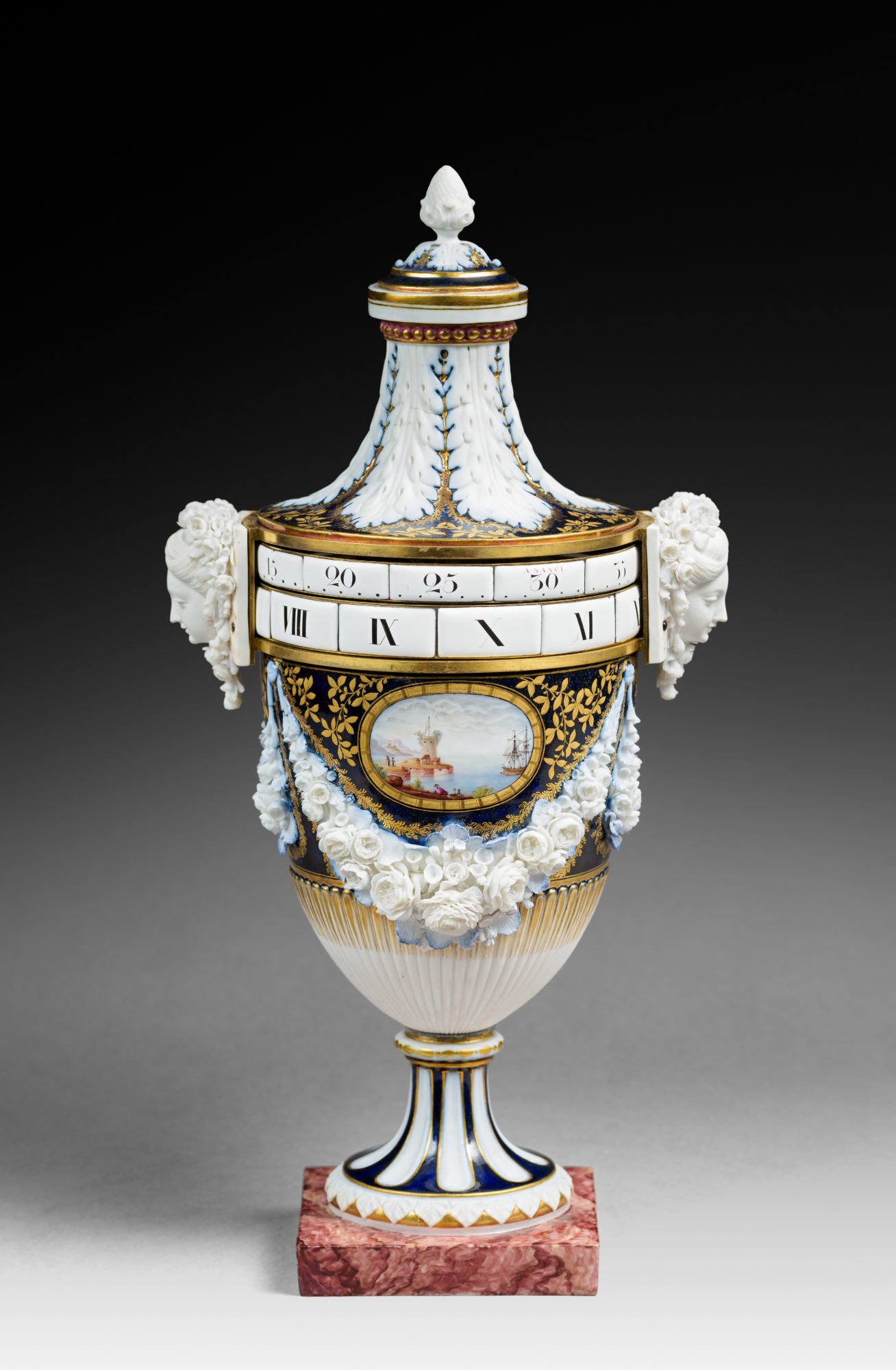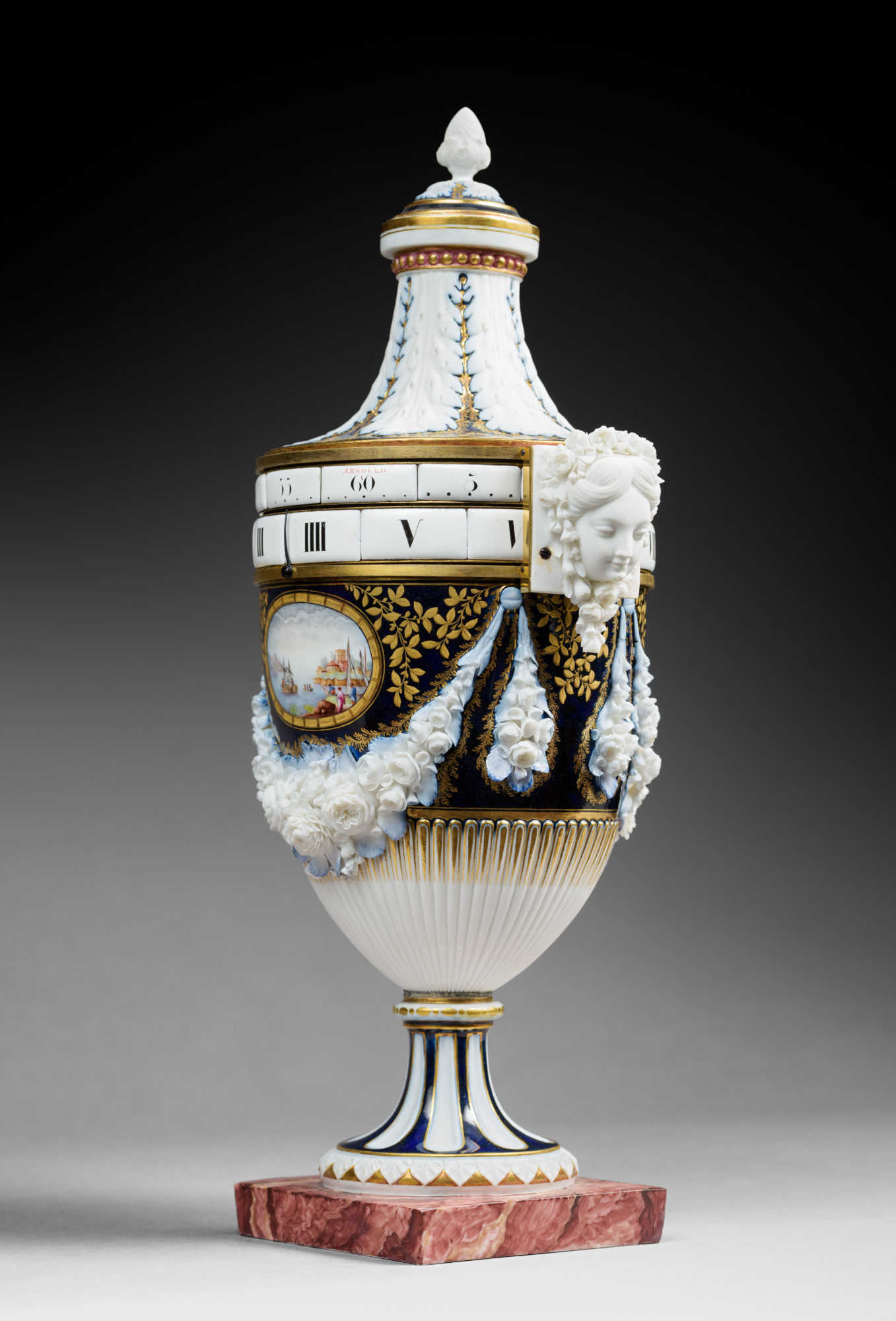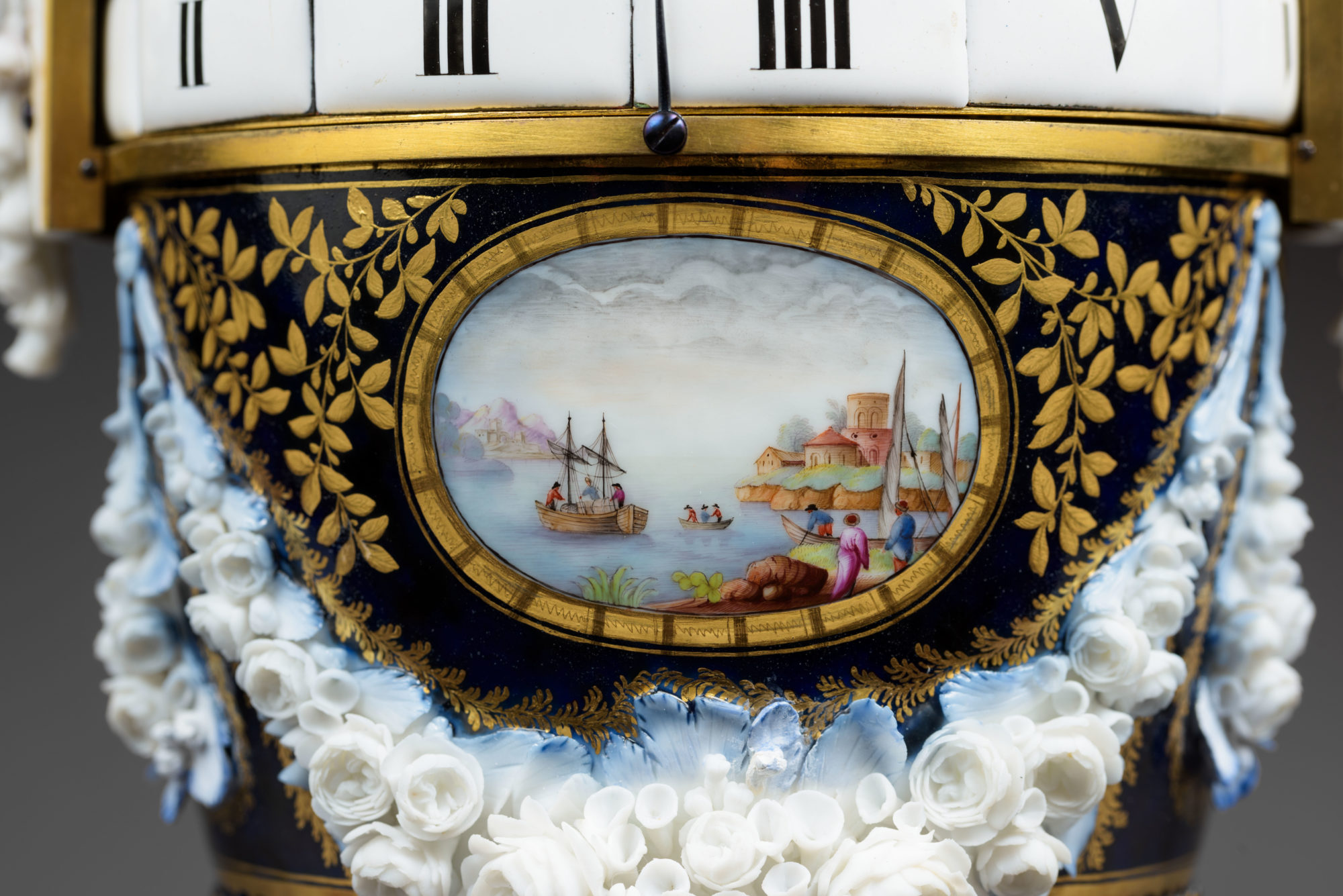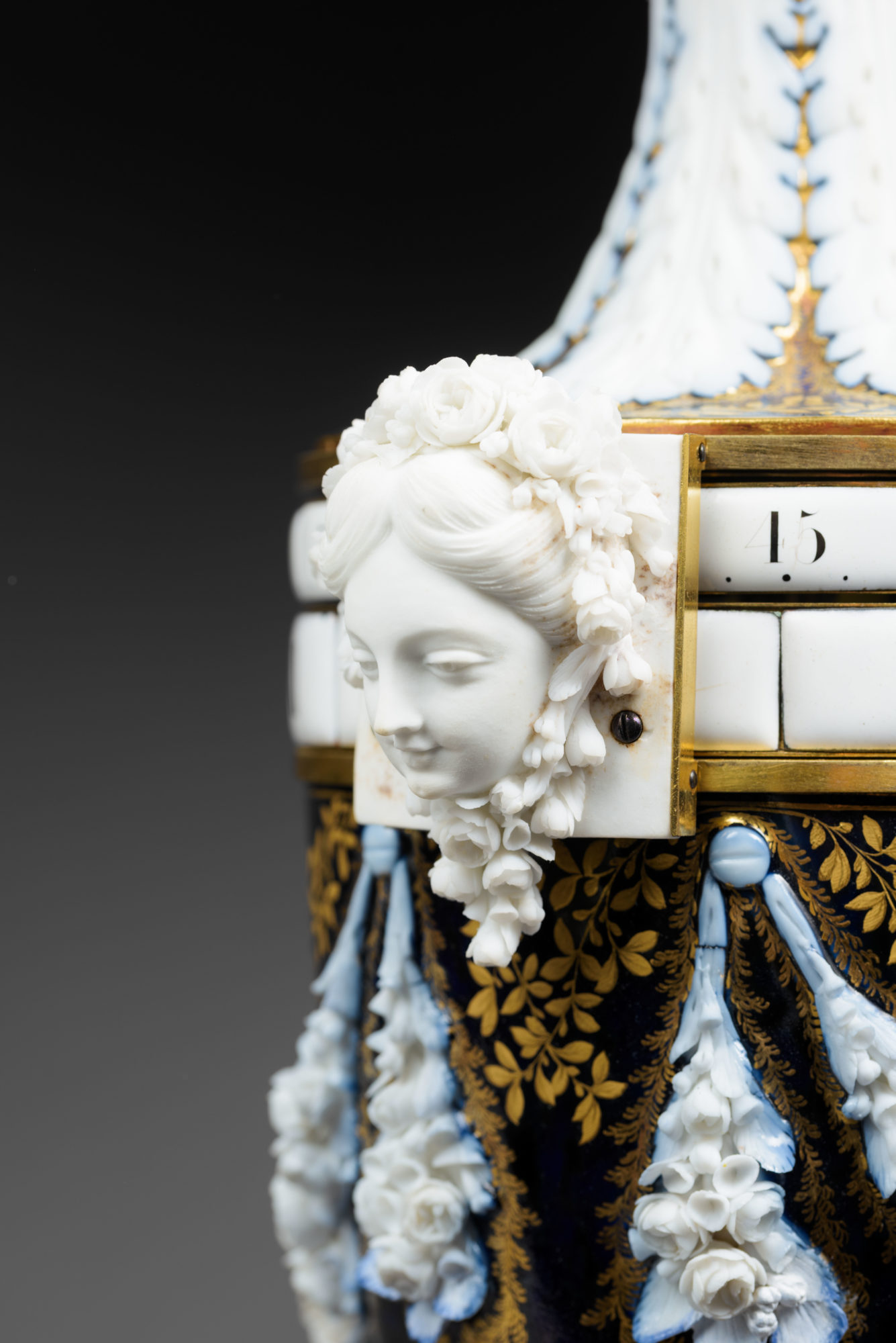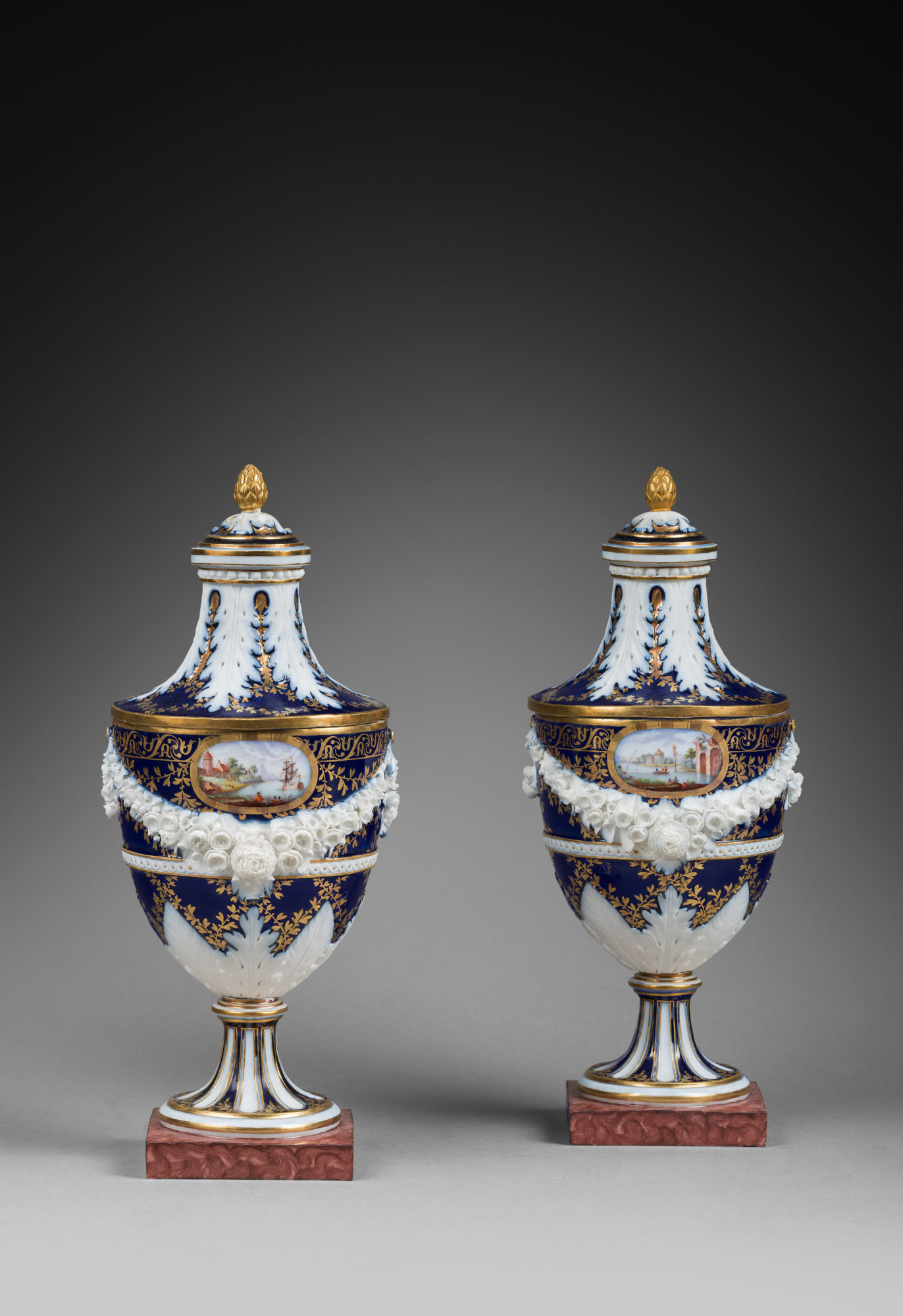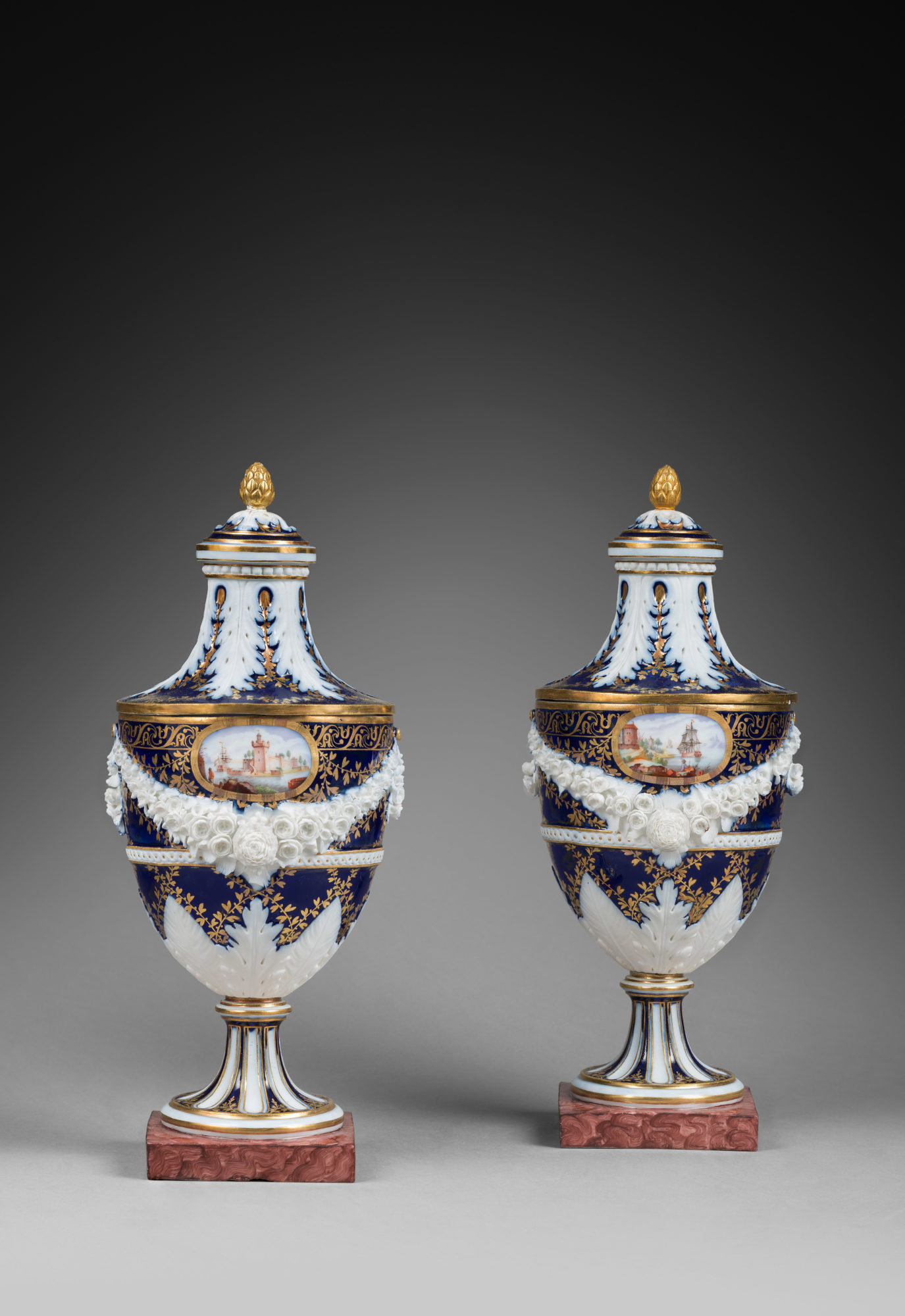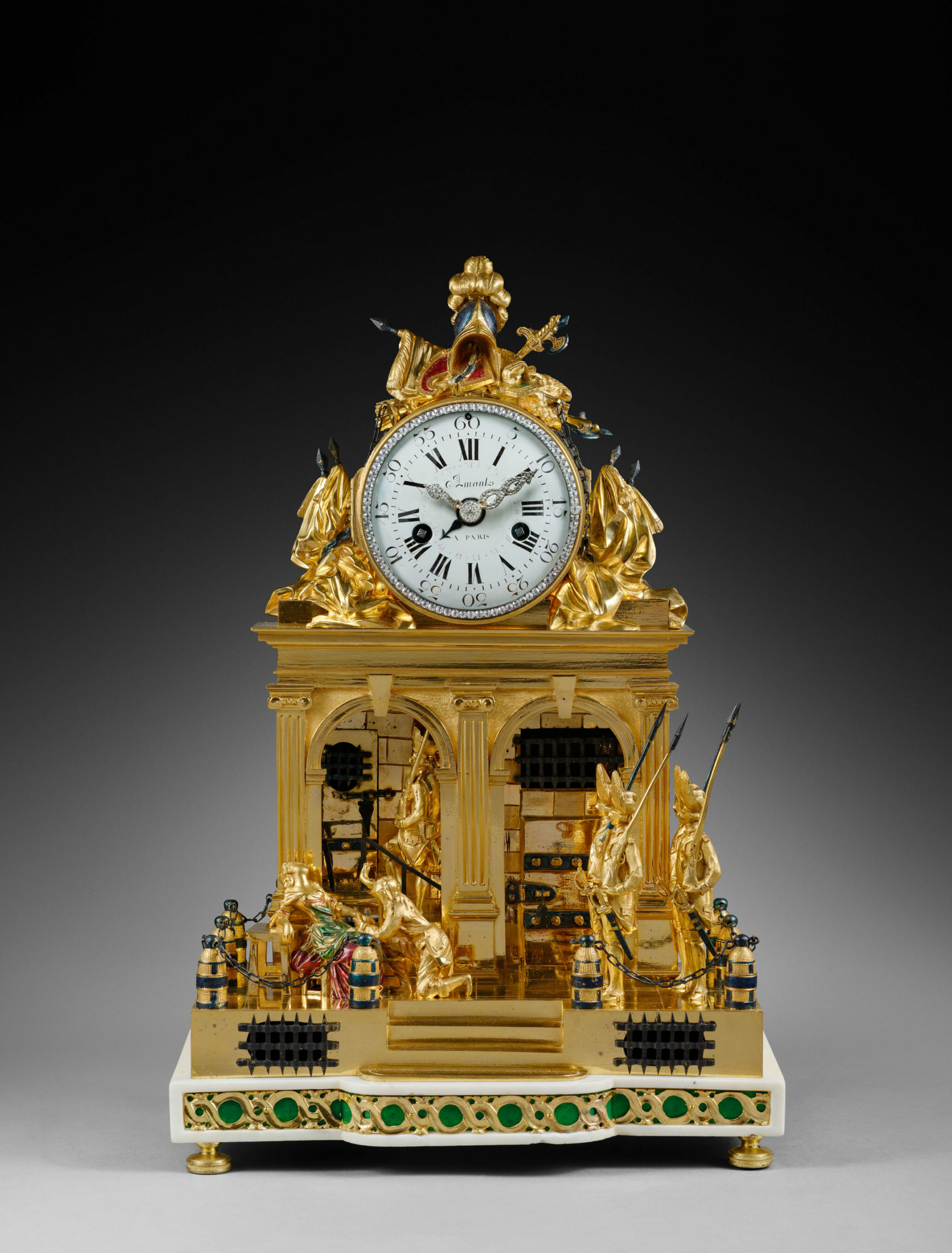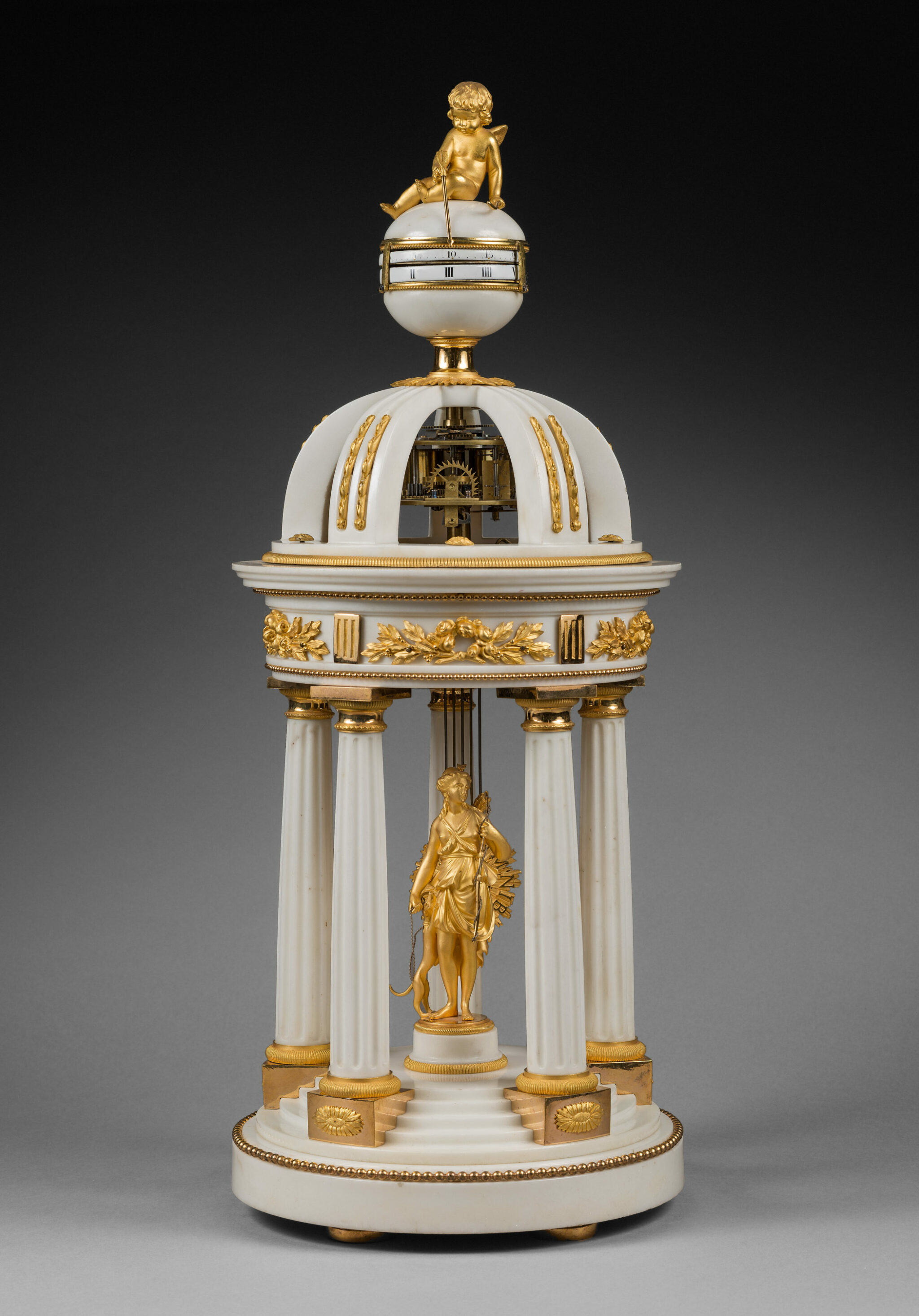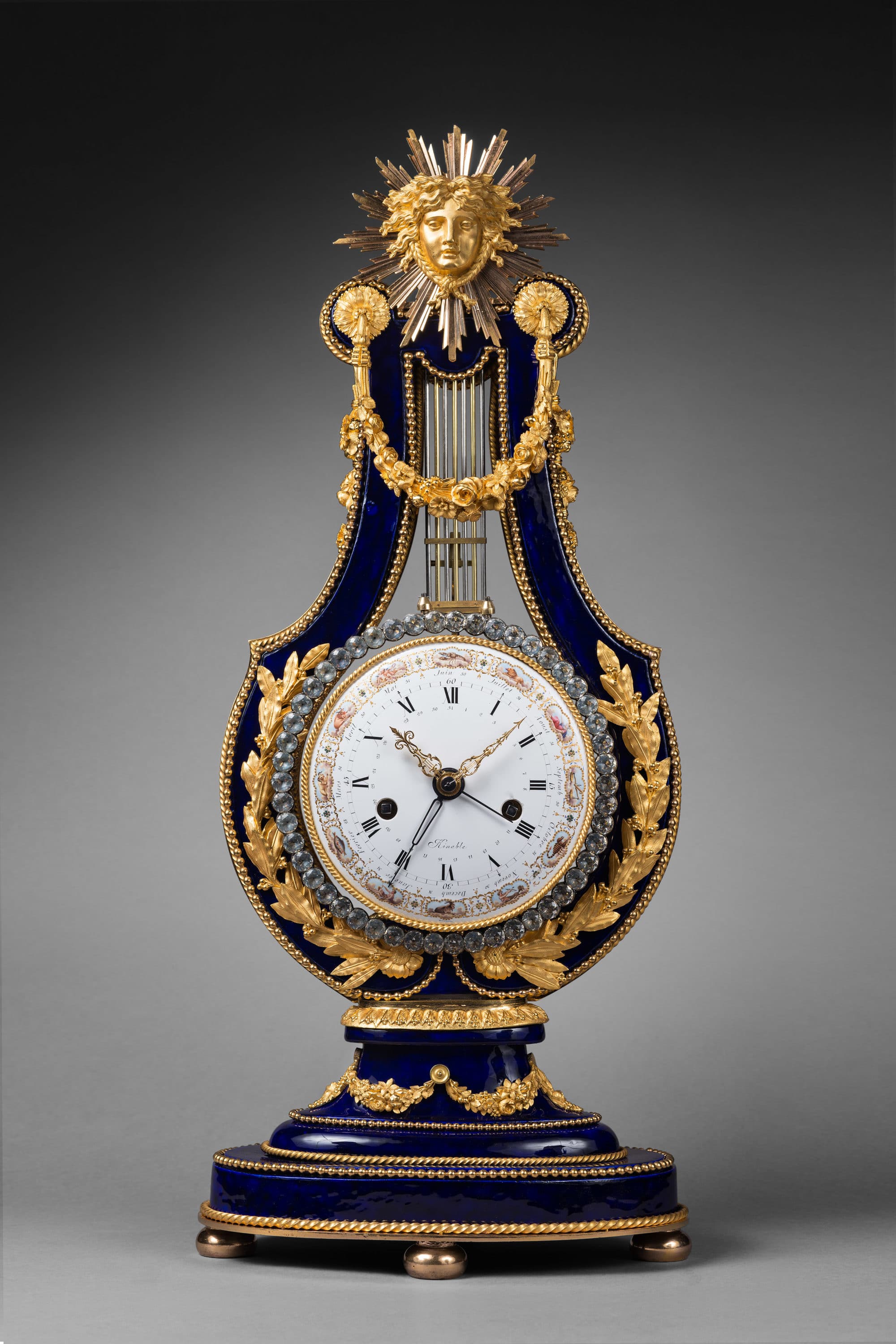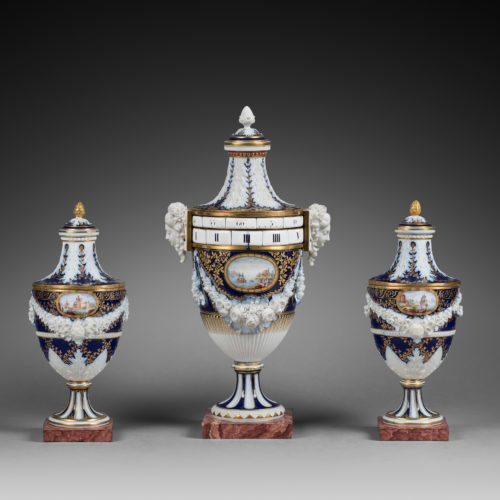Rare Porcelain, Bisque and Bronze Mantel Garniture Comprising a Clock and a Pair of Ornamental Vases
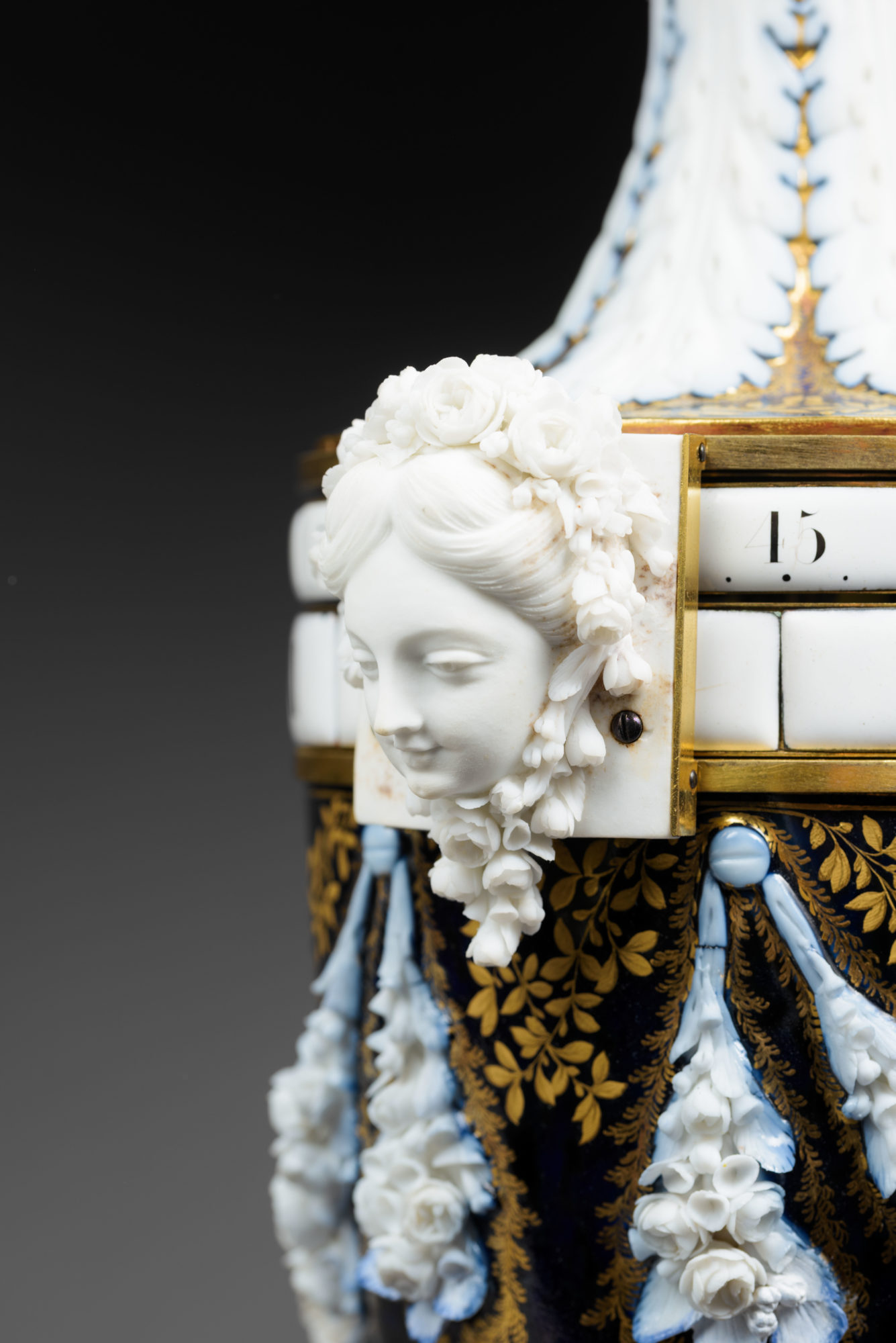
Niderviller Manufactory, known as the Comte de Custine’s Manufactory
Lorraine, Louis XVI period, circa 1785
The vase-shaped clock features two cercles tournants comprising two rows of white enamel cartouches, bearing the signature “Arnould à Nanci”, the signature of the Nancy clockmaker Nicolas Arnould. They indicate the Roman numeral hours and the Arabic five-minute intervals by means of a blued steel pointer. The movement is housed in a magnificent polychrome hard paste porcelain baluster vase, in the style of an antique vase, decorated with gold leaf garlands against a blue ground. On either side there is an oval medallion depicting a lake scene done in the manner of Claude Gelée (known as Le Lorrain). The bisque handles are in the form of female masks coiffed with flower wreaths. The belly of the vase is adorned with leaf and flower garlands; the cover is decorated with acanthus leaves, with a pinecone finial. The lower portion of the vase is embellished with delicate gadroons that are partially gilt. The spreading base is adorned with gadroons and a leaf frieze. The clock rests on a quadrangular base that is painted in imitation of fleur de pêcher marble. The elaborate, baluster shaped vases that complete the garniture feature an en suite décor.
Discover our entire collection of antique mantel clocks for sale online or at the gallery.
La Pendulerie is the specialist in fine and rare antique clocks, based in Paris.
This exceptional mantel garniture stands out from among the rare comparable models known today. Indeed, the clock has retained its decorative side vases, which happens very rarely. Among the similar models known – all now lacking their matching vases – one example is illustrated in G. and A. Wannenes, Les plus belles pendules françaises, de Louis XIV à l’Empire, Polistampa, Florence, 2013, p. 248. A second example with a white ground, signed “Garrigues à Marseille”, was formerly in the Hudelot and Le Tallec collections (illustrated in Tardy, Les plus belles pendules françaises, La pendule française dans le Monde, Paris, 1994, p. 93; see also P. Kjellberg, Encyclopédie de la pendule française du Moyen Age au XXe siècle, Les éditions de l’Amateur, Paris, 1997, p. 301). A third example is illustrated in P. Heuer and K. Maurice, European Pendulum Clocks, Decorative Instruments of Measuring Time, Munich, 1988, p. 44, fig. 64, and a fourth example is in the Musée Sandelin in Saint-Omer (illustrated in A. Lemaire and M. Gay, “Les pendules à cercles tournants”, in Bulletin de l’Association nationale des collectionneurs et amateurs d’Horlogerie ancienne, spring 1994, n° 69, p. 20, fig. 26).
One further similar clock that is nearly identical to the present example, comprising a clock made by Nicolas Arnould père in Nancy, with its matching mantel garniture, is in the Musée Nissim de Camondo in Paris (see B. Rondot and X. Salmon, Musée Nissim de Camondo, Catalogue des collections, RMN, Paris, 1998, p. 22, catalogue n°100).
Originally a faience factory, founded in 1735. On September 4, 1748, Jean-Louis Beyerlé, then the director of the Strasburg mint, purchased the manufacture for 90.000 livres. He quickly expanded production by hiring François-Antoine Anstett, who had been trained at the Meissen Factory. Approximately two decades later, Jean-Louis Beyerlé, who had infringed on the royal privilege for the production of hard-paste porcelain that had been granted to the Royal Sèvres Manufacture, sold the factory to Adam-Philippe, Count de Custine, who diversified production by purchasing the majority of Paul-Louis Cyfflé’s molds and by hiring the promising sculptor Charles-Gabriel Sauvage (known as Lemire, 1741-1827). When the Revolution broke out, the Count de Custine was condemned, and the Niderviller pottery factory was confiscated, becoming the property of the nation.
